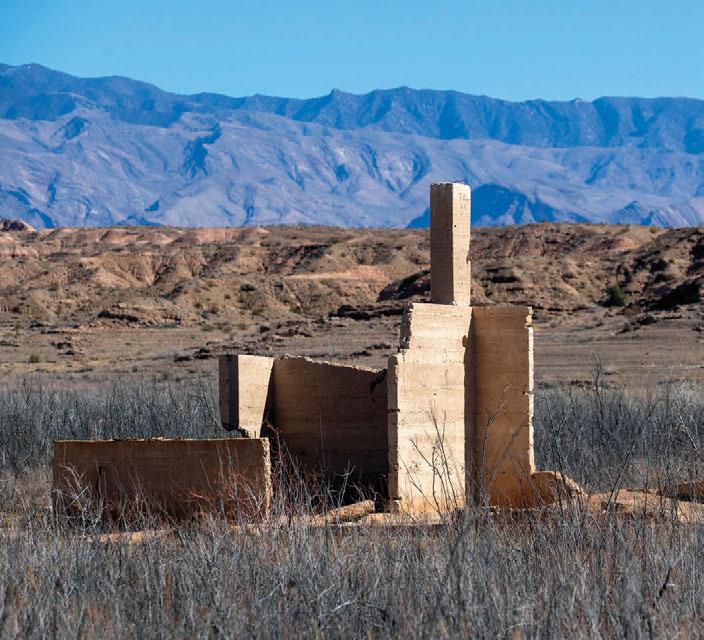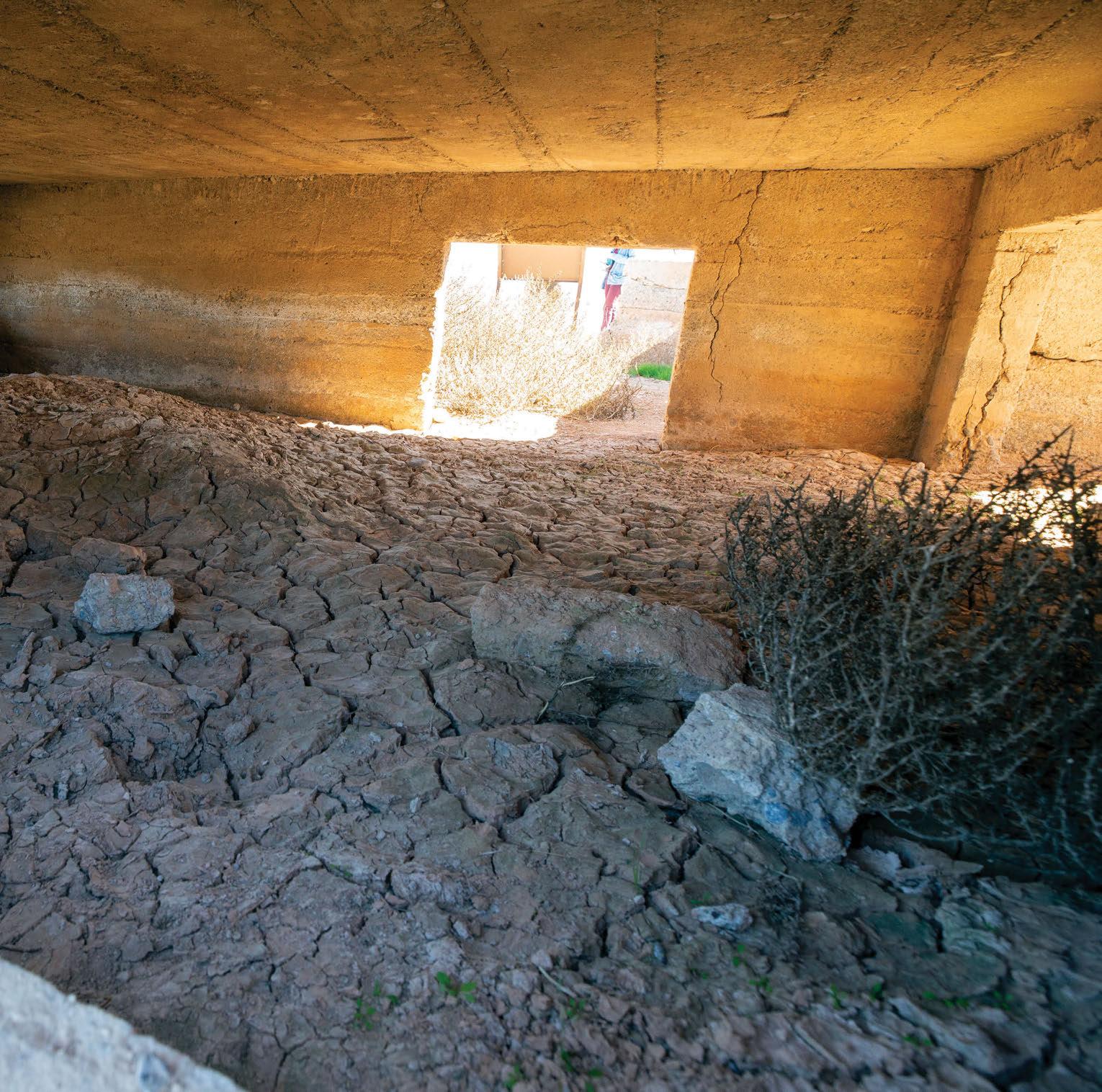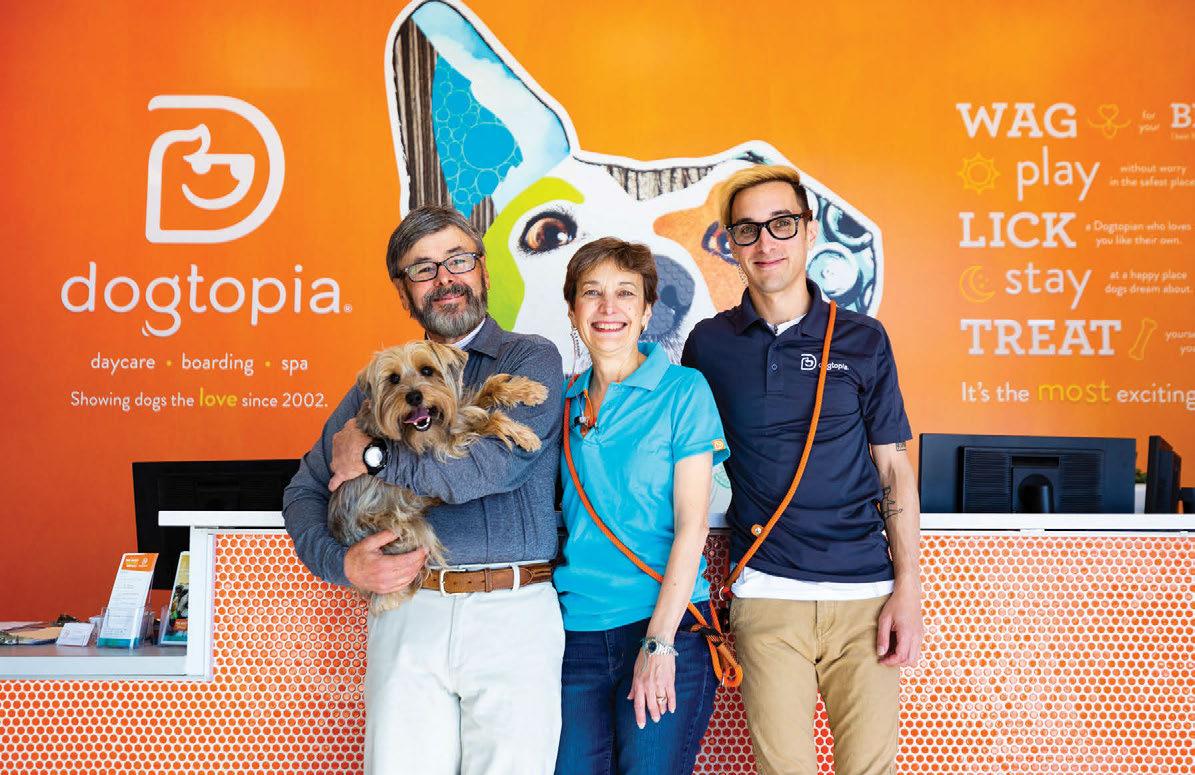
5 minute read
News: St. Thomas, the Southern Nevada city once underwater

LEFT: The remains of what was once a two-story school in St. Thomas, no w part of in the Lake Mead Recreation Area near Overton.
RIGHT: Skeletal pieces of a grocery store and an ice cream parlor

Cracked mud lies beneath the remains of a St. Thomas home. the town was virtually abandoned. “They were given a certain dollar amount for their homes,” Maughan says. “It basically was, ‘Take it or leave it,’ because their homes were going to be covered up.”
The last resident of the town was Hugh Lord, who famously stayed until 1938, when the water came lapping at his door. He escaped by boat after burning his home to the ground, according to Maughan. “He did not want it taken by the lake,” she says.
Over the years, the town sometimes became visible again during unusually dry seasons, Maughan says. On those rare occasions, former residents would meet at the site of the town and hold a reunion and ceremony, she says. The most recent one took place in 2012.
But unprecedented drought conditions in the early 2000s that continue to this day have brought the site well above the lake level, perhaps permanently. It would take at least 20 years of above-average precipitation for lake levels to exceed the elevation of the town again, Kennedy says.
“One day, hopefully it will be [submerged] and the lake will be back to higher levels, but not anytime soon,” she said.
Today, Maughan knows of one former St. Thomas resident who’s still alive and living in Hurricane, Utah. Others with ties to the former town frequently stop by the historical society with questions about its history, she says.
While she has no direct connection to St. Thomas, Maughan has become fascinated by its history, especially from living in Moapa Valley, where many former St. Thomas families reside. Through the local historical society, she hopes to ensure that the town isn’t lost.

BY BRYAN HORWATH A fter spending much of their adult lives working for someone else, Hiram and Glenda Toro decided they were ready for a change. Glenda was employed in human resources at UNLV, while Hiram was a business professor at the College of Southern Nevada.
This month, they went into business for themselves by opening Dogtopia, a dog day care in Summerlin. The franchise mirrors the 100-plus Dogtopia locations nationwide, meaning, “You don’t have to reinvent the wheel,” Hiram Toro said.
Buying into a franchise has plenty of safeguards, namely that owners become part of an established brand with a company already versed in operating. A fast-food restaurant, for instance, has a certain way to make a sandwich, and that sandwich will taste the same wherever you order it.
The most signi cant challenge is coming up with the money to start. Companies often have capital requirements, including liquid capital benchmarks that must be met before potential owners can be considered for franchisee opportunities.
Hiram said it took roughly $100,000 to open the location.
“What you get back, though, is that feeling of creation, of doing something constructive,” he said. “Your business kind of becomes like your son or your daughter. It’s a labor of love. For many years, I did what I needed to do; now I’m doing what I want to do.” The Toros are hardly the only business owners in Southern Nevada who have recently gotten into franchising.
Nevada is one of the best spots in the country to do it, according to the International Franchise Association, a trade organization that recently ranked Nevada 10th on its list of the top U.S. states for franchise growth in 2020. Texas, Colorado and Arkansas were ranked as the top three states.
“The franchise industry is responsible for creating tens of thousands of opportunities for small-business ownership across the country and millions of jobs for Americans,” said Robert Cresanti, the franchise association’s president and CEO.
A booming area with steady population growth, Southern Nevada is ripe for franchise opportunities, Cresanti said.
Traditionally, people think of some of the popular fast-food franchise brands—McDonald’s, Subway or Taco Bell—but opportunities can come in all sorts of industries.
“We’ve seen many young entrepreneurs opening franchises in the personal services sector, which is the fastest-growing franchise sector in the country,” Cresanti said. “The types of businesses—personal care salons, specialty exercise studios—are growing rapidly, both in Nevada and across the country.”
Cresanti said it’s vital to research particular franchise brands before making any type of investment. “The single most important thing to remember is to do your homework before you buy a franchise,” Cresanti said. “Franchising can be a great opportunity, but every brand isn’t for every person. Ownership can be a huge time and nancial commitment.”
Franchise ownership and the jobs that come with those endeavors are responsible for about 74,000 jobs in Nevada, the franchise association reports.
“It’s a good time to be in Las Vegas, [and] I think it will continue to be a good market here for some time to come,” Hiram Toro said. “We’re the little giant right now in the United States. We’re this little city that’s getting all this exposure. I think we have nothing to do but grow.” Nevada cultivates fertile ground for those considering franchising
From left, owners Hiram Toro (with Milo) and Glenda Alemany-Toro and GM Daniel Toro run their Dogtopia franchise in Summerlin. (Wade Vandervort/Staff)





